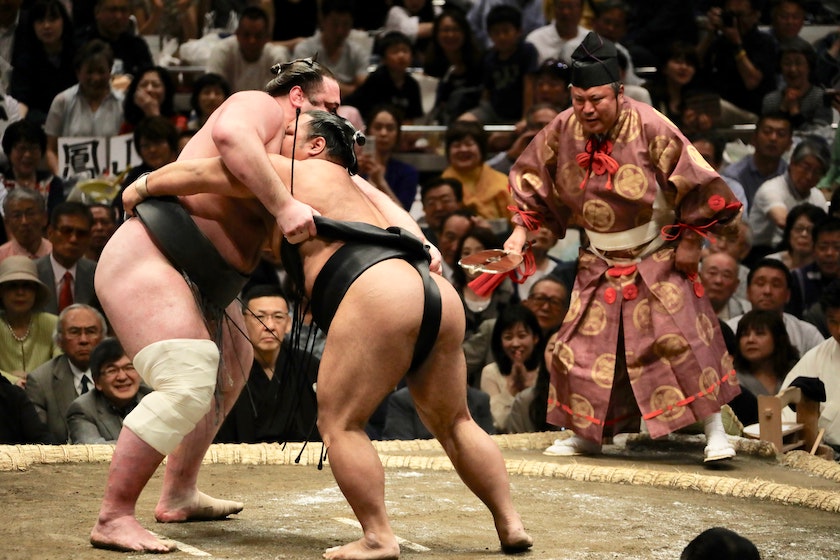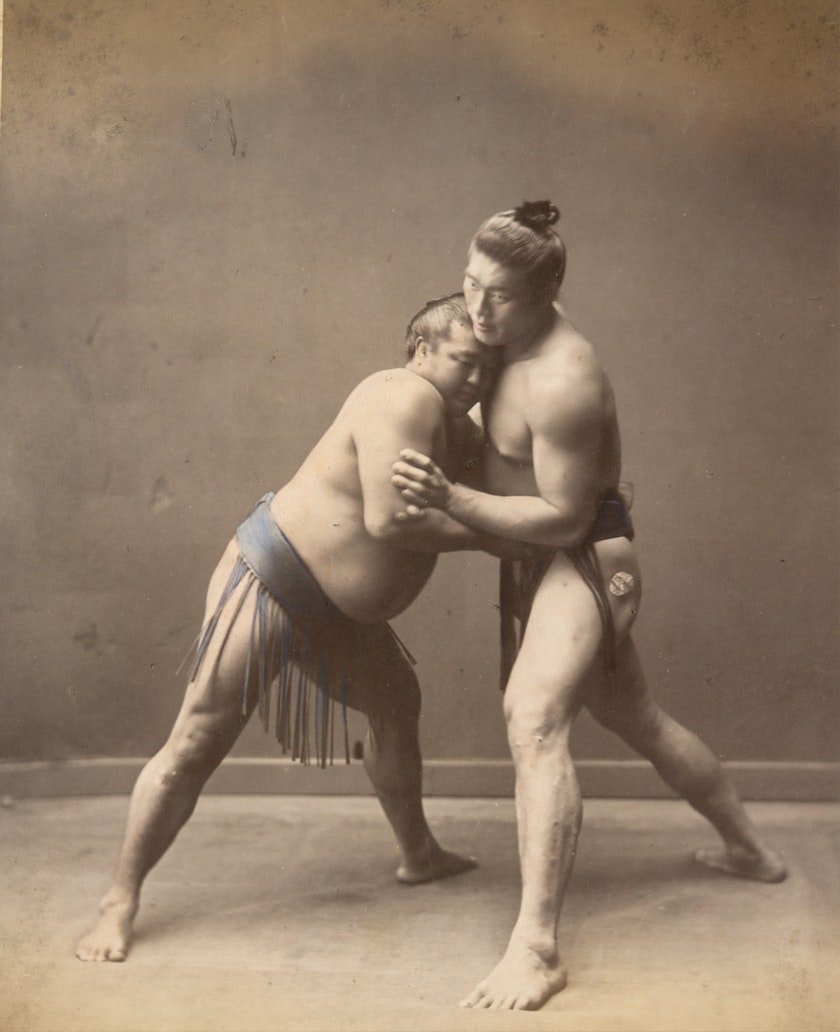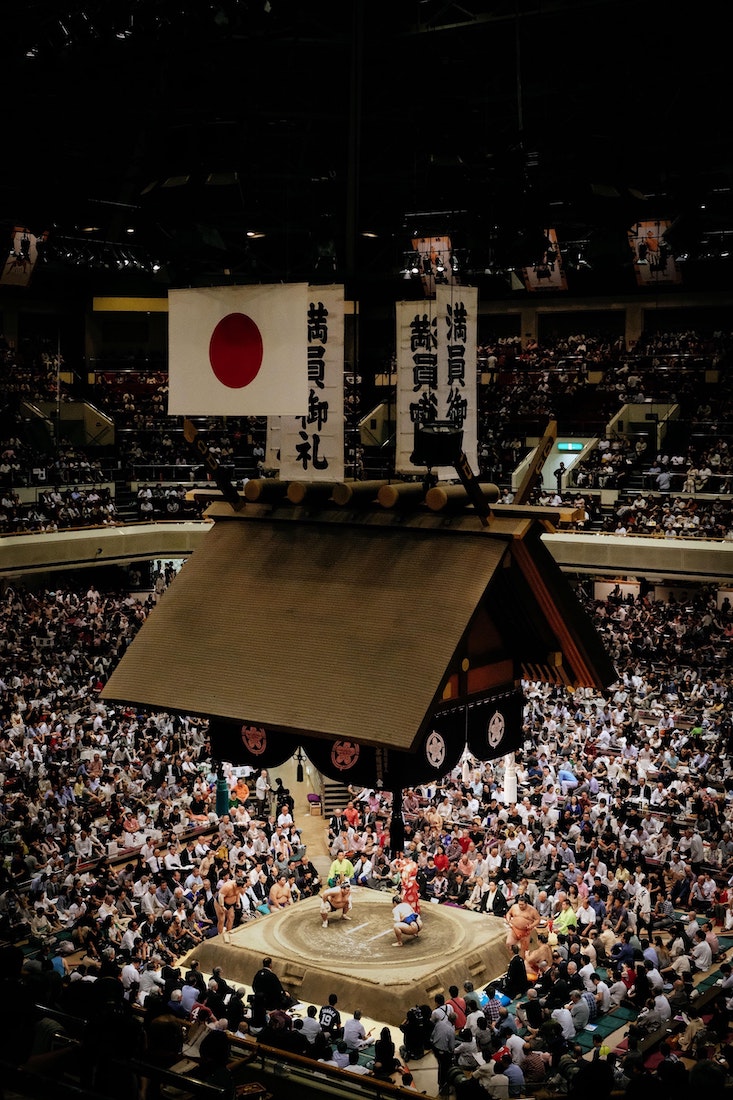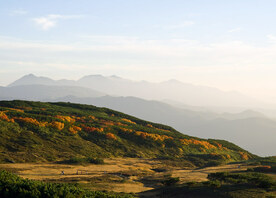Sumo is Japan. Big, bold, and unique! Discover the history and customs of Japan’s epic national sport and what it’s like to attend a sumo-sized match.
Table of contents:
Intro
The History of Sumo
Sumo Customs and Rules
Attending a Sumo Match
National Sumo tournaments
Getting Tickets for Sumo
Bonus Tips for Sumo Fans

Intro
Sumo is quintessentially Japanese. Big, bold, steeped in history and tradition, and completely unique. Sumo is so synonymous with Japan, it’s hard to imagine it existing anywhere else and at the same time, it’s also quite a surprising national sport for a country with a reputation for being understated and polite. Of course, Japan is filled with surprises. That’s one of the reasons it’s such a popular travel destination. A trip to Japan is an unforgettable, life-changing experience, and for many people a visit wouldn’t be complete without seeing a sumo match. It would be like going to Japan without trying sushi, visiting a single temple or shrine, or seeing Mt. Fuji. In our introduction to sumo in Japan, we’ll take you through the history and customs of this truly spectacular sport, how to get tickets, when and where to watch it, and what it’s like to experience a match. Get set for a sumo-sized guide.

The History of Sumo
Sumo wrestling has a proud and ancient history as Japan’s national sport. Carvings of sumo figures have been found that date back as far as the 3rd Century, making the sport well over a thousand years old. Between the 3rd and 7th Centuries, it is believed that sumo contests were enacted as a Shinto ritual to pray and say thank you to the gods for a good rice harvest. This was the origin of sumo as detailed in the Kojiki and Nihonshoki – two of the most ancient Japanese history books. By the Nara (710-794) and Heian (794-1192) periods, sumo had become a more elaborate event which was performed at the imperial court for the Emperor. Sumo were also employed by samurai as training partners to help warlords and warriors to increase their physical strength. It wasn’t until the Edo period (1603-1867) that sumo truly became the sport that we recognise today. During this period, a set of rules were created, including 48 legal moves, the elevated circular ring, and stables to train the wrestlers. Many of the ritualistic Shinto practices from the origin of sumo were retained in the updated rules and customs, and carry on to this day, making the sport a living embodiment of Japanese tradition, as well as an incredible spectacle.

Sumo Customs and Rules
The basic rules of sumo are relatively simple. It is full-contact wrestling, and a display of brute force, strength, and considerable skill, in which one rikishi or sekitori (two of the names for sumo wrestlers by rank) attempts to force the other outside of the ring, which is known as the dohyo, or to touch the ground with anything other than the bottom of their feet. As we mentioned, there are 48 permitted moves that sumo wrestlers can use against their opponent. If they use an illegal move, known as kinjite, they forfeit the match. The dohyo in which the two sumo collide is an elevated earthen ring, made from clay, covered in sand, and enclosed by a circle of rope. It is said that rice is buried under the ring to reflect the ancient origins of sumo, while the wooden roof that hangs over the dohyo in the arena is the same style and constructions as those of Shinto shrines. For more on Japan’s Shinto beliefs, read our Spiritual Guide to Japan.
The rituals continue inside the circle too, with elaborate ring-entering ceremonies. The entrance of a Yokozuna grand champion for instance will feature a tachimochi, or sword bearer. When the two opponents enter the dohyo they look into each other’s eyes before turning to face their corners, which are always either south-west or south-east. Each wrestler then performs the shiko – one of the most famous and recognisable sumo rituals. This is basically the moment they squat, clap, and raise their right leg before bringing it down with a stamp. Once they have done this with their right foot they do the same with their left. After this, the wrestlers return to their respective corners where they are given water known as chikara-mizu, or ‘strength water’, to rinse their mouths out. This is connected to Shinto purification rituals. Next, the two wrestlers assume the sonkyo position in the centre of the ring. This is a wide-legged stance to indicate they are willing to fight fairly. At this point, any prize money being fought for is displayed on banners by the ring. Purification salt is then thrown by each wrestler over their shoulder as they take their place on the starting line, or shikiri-sen. The wrestlers then perform one final shiko and the gyoji (referee) tells them it is time to begin. They are now ready to fight. It’s worth noting that unlike boxing, there are no weight classes in sumo, so adding extra weight to your frame is a big part of a sumo’s training regime and diet, although strength and skill are just as important as size.
Life of a sumo
Sumo wrestlers (rikishi and sekitori) live in a special training stable called a heya. Their trainers, known as oyakata, are always former sumo, and they are very strict and regimented. A rikishi’s life is overseen by their oyakata, and everything from their training to their meals to their clothing is dictated by centuries of tradition. In return for their discipline and commitment, sumo wrestlers are national celebrities in Japan, earn a high wage, and often have fan clubs that follow them even after retirement.
Eat like a sumo
Food is a big part of a sumo’s life and their favourite meal is reportedly chanko nabe – a substantial hotpot which can feature meat, seafood, vegetables and broth. Perfect for putting on that extra muscle needed to be a Yokozuna! Japan is a paradise for food lovers, with everything from Michelin-starred dining to street food available as well as homegrown classics like sushi and ramen. For more on this topic read our Beginners Guide to Japanese Food and Regional Dishes.
Attending a Sumo Match
The opportunity to see two titans collide in the ring is not to be missed. The pre-match rituals alone are an incredible traditional spectacle for fans, particularly international visitors, as well as the unique atmosphere in the arena. There really is no other sport quite like it. Matches are held in stadiums and take place all day from 8am to 6pm. The main matches, featuring the highest ranked sumo, take place in the afternoon. You can watch some of the lower ranked wrestlers in the morning, but the stadium doesn’t tend to fill up until later in the day. Just make sure you’re seated for the main events, as you won’t want to miss those – the atmosphere in the arena will also be at its peak then. Stadiums sell snacks and drinks and it’s also possible to pre-order special bento boxes to enjoy at the event. Bento are essentially Japanese lunch boxes (of an exceptionally high-quality) and you can get them to take on train journeys too. This variety is called Ekiben and they’re so good they have a cult following. Find out more about these in our Guide to Ekiben.
- Bonus tips: When attending a match, you can rent English audio commentary head-sets if you’d like a play-by-play account of the action. And be sure to duck if a lower ranked wrestler happens to defeat the Yokozuna grand champion, as Japanese fans might throw their cushions!

National Sumo Tournaments
There are six official national sumo tournaments in Japan and each last 15 days. They are known as honbasho. Three of the national tournaments take place in Tokyo (in January, May, and September), with three more in Osaka (March), Nagoya (July), and Fukuoka (November). The sport is governed by the Japan Sumo Association and wrestlers are ranked in a hierarchy called banzuke. The premier league is makuuchi, and the grand champion is known as Yokozuna. Sumo begin their career in the lowest rank, jonokuchi, and their performances in the national tournaments can send their ranking up or down. Attending one of the six grand sumo tournaments – honbasho – is an amazing way to experience this unique sport. The three honbasho in Tokyo are held at the world famous Ryogoku Kokugikan stadium which can seat up to 13,000 spectators.
Remember, if you’re planning to travel around Japan to experience sumo, the best and most cost effective way to do this is using the country’s excellent domestic rail system and the JR Pass – the one ticket you need. Japan’s super-efficient, high-speed trains are the envy of the world and enable visitors to explore the length and breadth of this unique and unforgettable country. The Japan Rail Pass saves you money on individual tickets and can help you create a multi-city itinerary, enabling you to experience sumo across the country and take in other sights and attractions.
Getting Tickets for Sumo
Tickets for the national sumo tournaments should be bought in advance from Japan Sumo Wrestling’s official website, or other accredited vendors, although a small number of balcony tickets are sold on the day. You may also be able to purchase tickets at convenience stores, although you may need a good understanding of the Japanese language to do this successfully. You can buy tickets for any one or more of the 15- day tournaments. Tickets often sell out, especially for weekend matches and on national holidays, so it pays to book in advance to avoid missing out.
Tickets vary in price from ringside seats, which place you closest to the action, to traditional box seats with cushions, to balcony seating. Here is a quick description of each category of seating:
Ringside
You’ll have a great view as you’re closest to the ring, but there is a risk of injury if a sumo wrestler is pushed out of the ring by his opponent and falls into the crowd.
Box seats
Japanese-style box seats have capacity for four people and feature cushions. Shoes are always removed. Box seats are sold as entire boxes even if there’s only two of you.
Balcony
Western-style balcony seating is further away from the action, but they’re also the cheapest priced ticket and a limited number of seats are kept free for on the day sales.
Related attractions
Tokyo has been closely associated with sumo since the Edo period. If you’re visiting the city and want to find out more about sumo history, tradition, and culture, there are some great places to visit and particular districts to seek out such, as Ryogoku in East Tokyo, which is basically sumo central!
Sumo Museum
Based within the Kokugikan Sumo Stadium, the Sumo Museum is the place to go to find out more about the history of this unique sport. With portraits of champion Yokozuna from throughout the decades, photos of historic milestones, and a collection of memorabilia, including ceremonial aprons, there’s plenty to see. Only ticket holders can visit the museum during tournaments, although admission is otherwise free.
Restaurants fit for a sumo
Ryogoku is packed with excellent restaurants for sumo and sumo fans. Many serve a sumo’s favourite meal, chanko nabe, and even feature a dohyo ring in the restaurant for guests to step inside and take photos before or after their meal. Perhaps if you eat enough chanko nabe you might have a chance of following in the footsteps of your sumo idols.
Ekoin Temple
Sumo matches were held outdoors at Tokyo’s Ekoin Temple before 1909, when the first stadium was built. Today, the shrine can be visited for those wishing to honour former champions and trainers. You’ll find Ekoin Temple a short walk from Ryogoku station.
Tomioka Hachimangu Shrine
Located south of Ryogoku, sumo tournaments were held at Tomioka Hachimangu Shrine for more than 100 years during the Edo period, making it a particularly historic location for fans of the sport. The shrine grounds feature monuments to former champions and a museum, which can only be accessed on special request.
If you’re travelling around a major city like Tokyo, it’s useful to purchase prepaid travel cards for shorter journeys within Japan’s major cities. A prepaid travel card such as an ICOCA, PASMO or Suica card is essential for inner city public transport. Check out our Top 30 Tips for Using Japan’s Metros for advice and guidance on using the city’s subway network.
Bonus Tips for Sports Fans in Japan
- If attending a sumo match would make your trip to Japan extra special then you might also be interested in the country’s other popular sports and activities.
- Like sumo, kendo brings to life Japan’s traditions and customs through a sport that follows in the footsteps of the samurai. Our guide on How To Experience Japanese Martial Art of Kendo will tell you everything you need to know.
- Ekiden is a unique long distance team running relay that is very popular in Japan and not widely known in the west. Read our Guide to the Incredible Sport of Ekiden to find out more.
- It may surprise you to discover that the Japanese love baseball. It’s seriously big in Japan and attending a baseball match in the Nippon Professional League is a great way to experience the passion of Japanese fans. Discover more in our Beginners Guide to Japanese Baseball.
Start your engines! Japan loves Formula One and the country has one of the sport’s most celebrated circuits – Suzuka. Read our guide to F1 Racing in Japan for more. - Japan offers some of the finest ski slopes and resorts in the world and has hosted the Winter Olympics several times as a result. If you love winter sports and want to know more, read our Starters Guide to Skiing and Snowboarding in Japan.
- Finally, when it comes to sport and athletics, there are few events bigger than the Olympic and Paralympic games. The Tokyo Olympics are scheduled to take place in 2021 and will be another once-in-a-lifetime sport experience for visitors to Japan.





